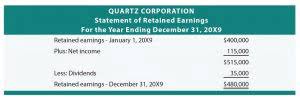If you’re a small business that manages its own books, you could be spending your time and resources elsewhere. By choosing the accounting and legal services of our professional company, you can count on a significant number of professional services by our specialists. The client will be assigned a personal consultant who is most interested in the client’s company to be successful and bring big profits, stable development.
For entrepreneurs involved in foreign economic activity, we provide comprehensive support in dealing with international transactions, currency exchange, import/export regulations, and tax considerations. Our expertise ensures that your business expands seamlessly across borders while maintaining financial accuracy and compliance. Working with an outsourced CFO offers business leaders the opportunity to access this financial expertise at a fraction of the cost of hiring a full-time CFO to work for their business. Additionally, when you outsource bookkeeping, you lose the ability to walk over to your bookkeeper’s desk and ask them a quick question.
You may think that outsourcing is only a practice for large, well-established businesses that offshore basic operations. But in reality, many businesses across the country, big and small, are embracing outsourced accounting. Among all these day-to-day activities, it can be difficult to find time for your accounting, even though you know how important it is to your business.
Choosing a partner whose values align with yours is crucial for enhanced growth potential. Find a firm that shares your passion for making a meaningful impact, particularly one specializing in accounting and finance. The advantages we’ve mentioned above can make a lot of difference in your accounting department and overall financial performance.
How to outsource bookkeeping
Accurate financial statements are a critical component to managing any business, and QuickBooks makes it easy to generate and send financial statements in just a few clicks. As your business grows, it’s likely you’ll experience new financial challenges, whether that’s securing funding to fuel an expansion how to file a labor complaint for an illegal payroll deduction into a new market or building the systems required to manage multiple revenue streams. It’s likely that an outsourced CFO has experienced these challenges before, making them well-qualified to advise your business on its strategic direction. Outsourced controllers also bring a tried and tested approach to helping manage your business’s finances.
- Outsource Accelerator is the leading Business Process Outsourcing (BPO) marketplace globally.
- Once you’ve signed an agreement, your service provider will need access to your data.
- Outsourced QuickBooks bookkeeping will make your business in Ukraine more successful because you will have accurate information daily to operate your business everywhere.
Streamline your order-to-cash operations with HighRadius!
Although technology has streamlined the process somewhat, bookkeeping remains a challenge for many business owners. Outsourced accounting firms work with a wide range of clients, many of which may also operate in your industry. Their teams live and breathe accounting every day, and will replicate best accounting practices from across your industry into your business’s workflows, boosting efficiency and productivity. Smaller businesses might get by with a basic Quickbooks set-up, but once you start growing, building a more sophisticated financial infrastructure is vital. Staffing an internal finance and accounting team is expensive and can place significant demands on your time. Outsourcing is a tried and tested resourcing strategy that typically sees businesses identify repetitive and time-consuming tasks and assign them to third-party team members in another location.
How AI is impacting the accounting and finance sector
In this comprehensive guide, we’re exploring every element of outsourced accounting. We’ll the death of lifo share the types of tasks that can be outsourced and highlight the key issues business owners need to consider when assessing outsourcing accounting providers. These outsourced accountants undertake diverse accounting tasks, ranging from bookkeeping, payroll, and financial reporting to tax management, accounts payable, accounts receivable, debt follow-ups, and more. With outsourced accounting, your in-house team will not only be freed from the time spent overseeing financial functions. Your outsourcing provider can also help assess the best time to outsource your accounting services.
As you evaluate different outsourced CFO options, there are several things to bear in mind to ensure you make the right choice. By keeping these considerations in mind, you’ll be able to avoid any of the drawbacks that can impact businesses that partner with an outsourced CFO that isn’t a great fit for their business. Many about zeroing out the clearing account businesses work with an outsourced CFO on a short-term project basis, although longer-term, ongoing advisory relationships are also common. There’s also the consideration that an outsourced controller has many additional skills that can benefit your business. This might include a knowledge of tax strategy, insights as to how you should structure your personal compensation to be tax-efficient, and more. With the right partner, it’s possible to mitigate these downsides entirely, but to do that, you need to be aware of what to be on the lookout for.
Low overheads, unrestricted opening hours and the potential for a global customer base.. As a leading think tank, the Thomson Reuters Institute has a proud history of igniting conversation and debate among the tax and accounting.. Ask anyone who has launched a small business and they will remember how exciting the early days were.



